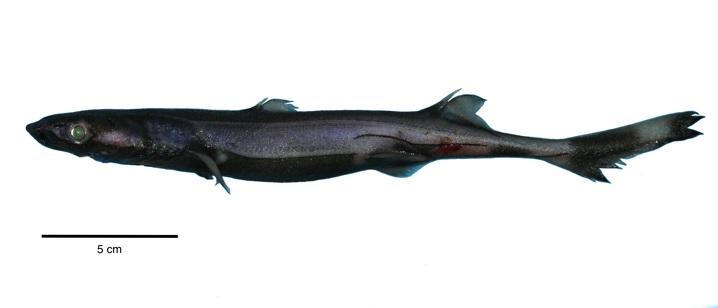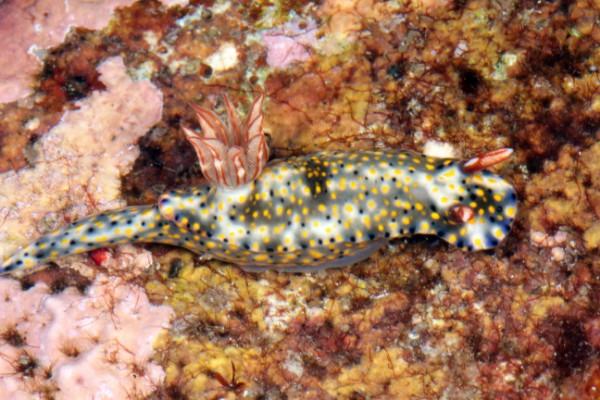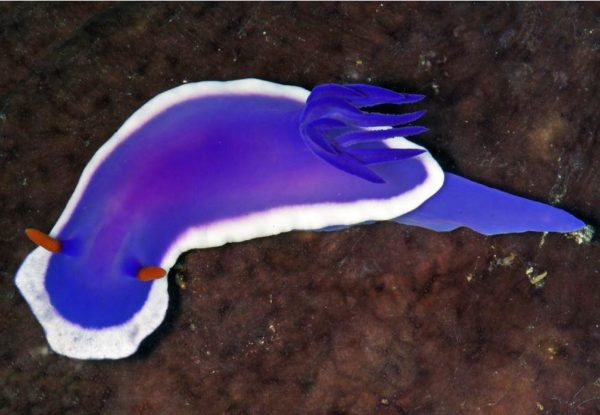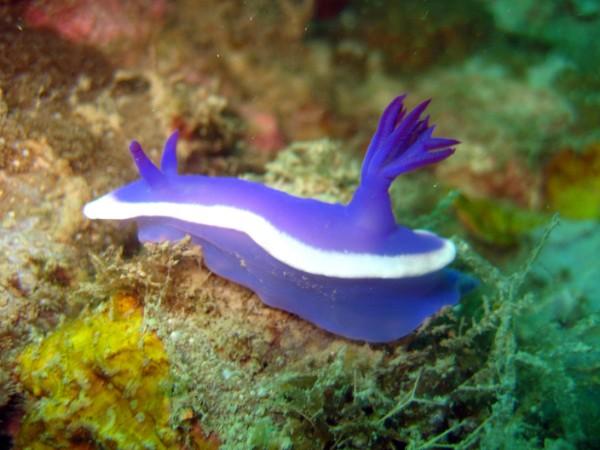•The California Academy of Sciences officially described 229 new plant and animal species for 2018.
•Collected across five continents and three oceans, the new species include 220 animals and 9 plants.
•Among these species, 14 can be found in the Philippines: 11 sea slugs, a shark, a frog, and a snake.
In 2018, Earth’s incredibly diverse flora and fauna officially got some new additions — and some of them are from the Philippines.
The California Academy of Sciences recently released its list of newly described plant and animal species for 2018. The new species include 220 animals: 120 wasps, 34 sea slugs, 28 ants, 19 fish, seven spiders, four eels, three sharks, two water bears, one frog, one snake, and one seahorse. The list also has nine plants (seven flowering plants, one moss, and one liverwort plant). The Academy worked with international researchers to identify the species, which they found across five continents and three oceans.
Among the 229 newly described species, 14 animal species came from various parts of the Philippines. Check them out below:
Sanguirana acai
Sanguirana acai. Image: Rafe Brown © California Academy of Sciences
Described by Dr. Rafe Brown, this stream-dwelling frog can be found in Negros Occidental. Descreibed as “relatively rare [and] patchily distributed,” Sanguirana acai was previously thought to be merely a variant of a previously identified species from Luzon. However, its unique physical characteristics — including its body size, bold pectoral patches, and body proportions — merited its reclassification as a new species. As very little natural forest area remains in the West Visayas region, experts say that Sanguirana acai ‘s continued survival is an “immediate conservation concern.”
Etmopterus marshae
Etmopterus marshae. Image: Dave Catania © California Academy of Sciences
Also known as Marsha’s Lanternshark, Etmopterus marshae is truly a wonder to behold. Its slim body and dark coloration helps it camouflage itself in the murky depths. Meanwhile, its green eyes and sparkly fins are almost otherworldly in their luminescence. According to Ichthyology Research Associate Dr. Dave Ebert, this shark stands out because of “[t]he intricate pattern, the flank marking, and the rather beautiful appearance of the shark in the fresh pic.”
Glossodoris buko
Glossodoris buko (Terry Gosliner © California Academy of Sciences)
Initially mistaken for a different species, Glossodoria buko can be found in Bohol, as well as in Papua New Guinea’s Bilbil Island. It earned its species name, buko, due to the fact that it looks like coconut meat. Quite appropriate, don’t you think?
Glossodoris acosti
Glossodoris acosti. (© Jim Anderson 1988-2018)
Like Glossodoris buko, this sea slug from the Philippines and Papau New Guinea was previously thought to be of a different species. Aside from its internal anatomy, it is distinguishable due to its highly detailed coloring.
Doriprismatica balut
Doriprismatica balut (Terry Gosliner © California Academy of Sciences)
Seemingly well-equipped for blending in with its surroundings, Doriprismatica balut possesses a whitish-brown body, with a thin, black marginal band atop a yellow submarginal band. Its distinctive gills are tan, with dark greyish edges, while its foot is mottled white.
Hypselodoris iba
Hypselodoris iba (Terry Gosliner © California Academy of Sciences)
This isn’t a mistake — there are, indeed, TWO color variations of Hypselodoris iba. Pretty cool, isn’t it?
Hypselodoris iba (Terry Gosliner © California Academy of Sciences)
Researchers say that its color variations (white and purple) demonstrate how color patterns evolve within and among species. “This is the first time we’ve been able to genetically confirm that color mimicry is widespread in the sea slug world,” says Terry Gosliner, who hails from the Academy’s Invertebrate Zoology department.
Hypselodoris lacuna
Hypselodoris lacuna. (Terry Gosliner © California Academy of Sciences)
Obtained from Tingloy, Batangas, Hypselodoris lacuna has an opaque white body, with round transparent patches and black (or grey) spots. It has small blue-grey spots along the edge of its mantle and orange pigment lines on its outer face, and can grow up to 12 mm in length.
Hypselodoris perii
Hypselodoris perii (Terry Gosliner © California Academy of Sciences)
Another sea slug found in Batangas, Hypselodoris perii also resides in Indonesia. Its white body has elongated red spots with diffused purple pigmentation and an orange-yellow border. It reaches a maximum length of 35 mm.
Hypselodoris roo
Hypselodoris roo (Terry Gosliner © California Academy of Sciences)
Frequently mistaken for Hypselodoris kanga — this seems to happen a lot to these poor sea slugs — Hypselodoris roo has an interesting color pattern. Its white body has large, yellow spots alongside smaller blue-black spots. Growing up to 45 mm in length, Hypselodoris roo possesses gills with orange-red edges.
Hypselodoris rositoi
Hypselodoris rositoi (Terry Gosliner © California Academy of Sciences)
Beware: This sea slug’s color scheme might make you hungry! Another sea slug found in Batangas, Hypselodoris rositoi has a pink body has a white border. It’s also quite large, as far as sea slugs go; it can grow up to 50-60 mm in length.
Hypselodoris skyleri
Hypselodoris skyleri (Terry Gosliner © California Academy of Sciences)
Found in Tingloy, Batangas, Hypselodoris skyleri is a relatively small species of sea slug, only 15 mm long. It also lives in the waters of Indonesia and the Marshall Islands. It is named after the son of one of the researchers, Dr. Rebecca Johnson. (Batangas sure has quite a lot of sea slugs, doesn’t it?)
Hypselodoris variobranchia
Hypselodoris variobranchia (Terry Gosliner © California Academy of Sciences)
A pretty common species, Hypselodoris variobranchia lives in the waters of Australia, Japan, Indonesia, Malaysia, and the Philippines. Growing up to an impressive 50 mm in length, it has a deep purple body with a solid white border.
Hypselodoris violacea
Hypselodoris violacea (Terry Gosliner © California Academy of Sciences)
The last sea slug on this list, Hypselodoris violacea can only be found in Palawan and northern Borneo in Malaysia. Another large nudibranch, it grows up to 50 mm in length, and has a deep purple body with a solid white border.
Calliophis salitans
Calliophis salitan (E.F. Jones and The Herpetologists’ League © California Academy of Sciences)
A species endemic to the Philippines, the venomous Calliophis salitan is a “mysterious” type of long-glanded coralsnake from Dinagat Island. It has black and white bands and a bright orange tail — a striking departure from its blue-tailed relatives. “The evolutionary origins of this new orange-tailed species remain a mystery,” explained Dr. Alan Leviton, emeritus curator and Academy Fellow. “The species might be more widespread than we think, there might be close relatives we haven’t discovered yet, or it could be the sole surviving member of a lost lineage.”
References
- Official list of 2018 species from the California Academy of Sciences.
- Taxonomic Reappraisal of the Northeast Mindanao Stream Frog, Sanguirana albotuberculata (Inger 1954), Validation of Rana mearnsi, Stejneger 1905, and Description of a New Species from the Central Philippines by Rafe M. Brown, Allyson Prue, Chan Kin Onn, Maren Gaulke, Marites B. Sanguila, and Cameron D. Siler
- https://academic.oup.com/zoolinnean/advance-article-abstract/doi/10.1093/zoolinnean/zly048/5098244?redirectedFrom=fulltext
- Glossing over cryptic species: Descriptions of four new species of Glossodoris and three new species of Doriprismatica (Nudibranchia: Chromodorididae) by Shayle B. Matsuda and Terrence M. Gosliner
- Academy scientists describe 229 species in 2018 by California Academy of Sciences
- Lighting The Way For A New Lanternshark Species by Melissa Cristina Marquez
- Doriprismatica balut Matsuda & Gosliner, 2018
Author: Mikael Angelo Francisco
Bitten by the science writing bug, Mikael has years of writing and editorial experience under his belt. As the editor-in-chief of FlipScience, Mikael has sworn to help make science more fun and interesting for geeky readers and casual audiences alike.






















